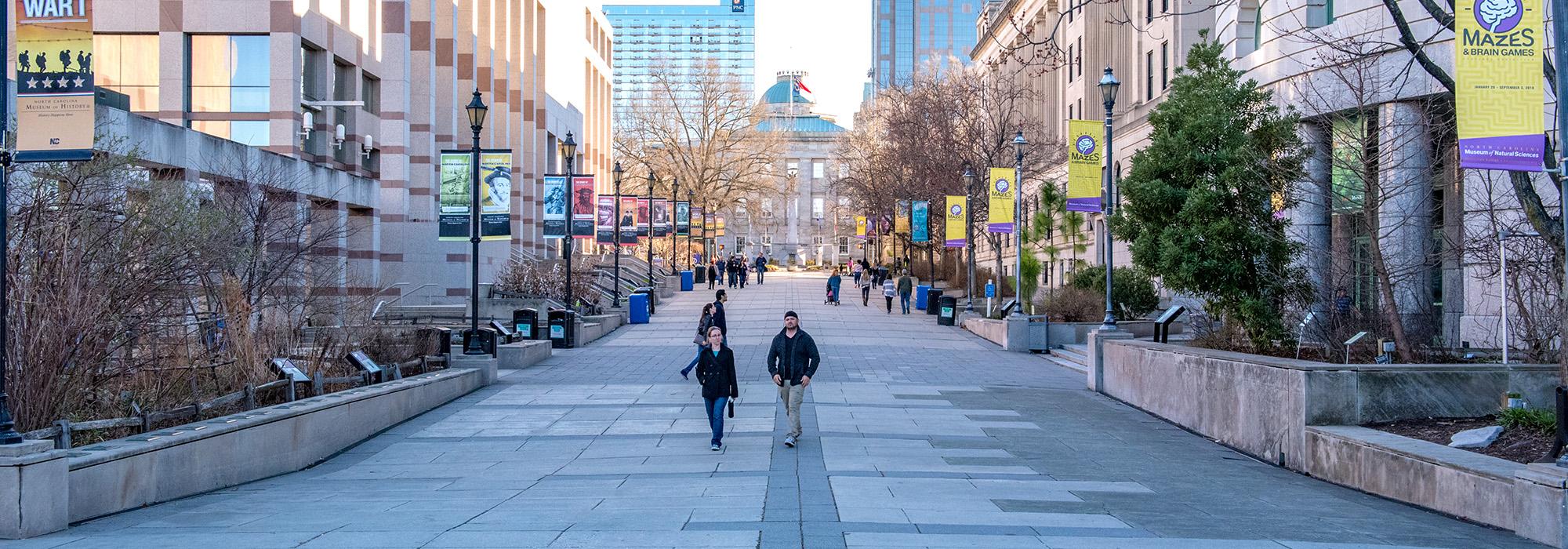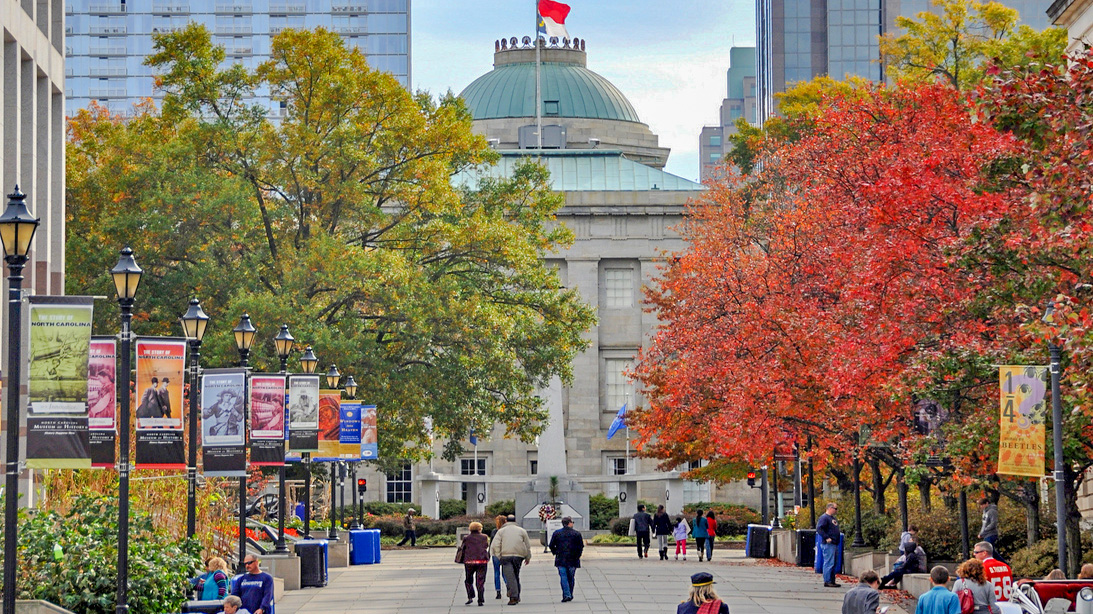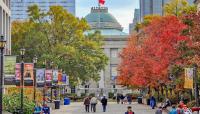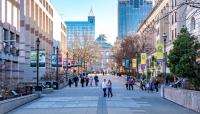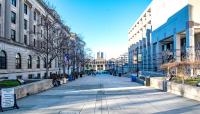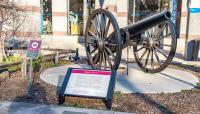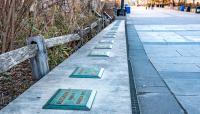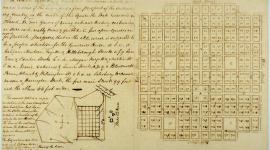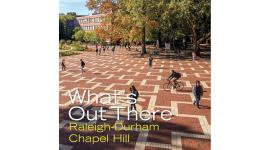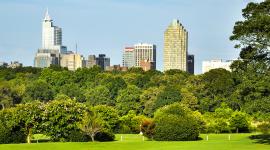Landscape Information
This processional space between the North Carolina State Capitol and the North Carolina Legislative Building directly to its north occupies the footprint of Halifax Street, one of the four main axial avenues in William Christmas’ 1792 plan for Raleigh. While Fayetteville Street, extending south from Capitol Square, became the spine of the city’s business district, Halifax and its surrounding streets emerged as a residential neighborhood in the nineteenth century. In response to the urban blight facing the area in the early twentieth century, the city elected to convert it into a governmental district. By the early 1960s, the residential properties fronting Halifax Street were being razed in anticipation of future development. In 1976 Halifax Street was closed to traffic, and Richard Bell, who had designed the landscape and interior gardens for the Legislative Building beginning in 1963, was hired to design the plaza. He created a red-brick-paved plaza with an open lawn on either end. A bronze statue of Sir Walter Raleigh (by Italian sculptor Bruno Lecchesi) and an exact replica of the Liberty Bell were introduced as focal elements. The openness of the pedestrian mall increased freedom of movement while strengthening a stronger visual and physical connection between the Capitol and the new Legislative Building.
In 1992 the North Carolina Museum of History moved to the east side of Bicentennial Plaza. At that time the plaza was redesigned and furnished with wide granite pavers and trees and perennials fronting the museum. Artifacts and informational plaques were also added, increasing site interpretation and strengthening the relationship between the museum’s collections and its setting.



